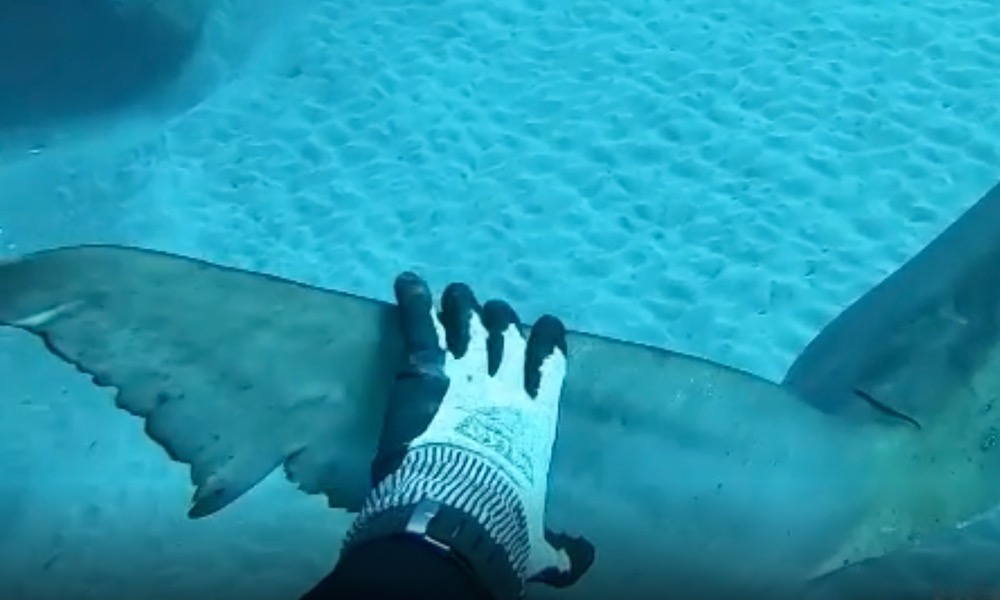While freediving off Florida, Nick Bailey spotted a great white shark for the first time and, after watching video of his close encounter, wished it could happen again so he could touch it.
His wish came true the next day. This time, he swam toward the great white, and reached out and grabbed its tail, prompting the shark to calmly kick a bit stronger to get out of his reach.
Bailey kicked to the surface to announce his achievement.

“I touched a great white!” he exclaimed in the video. “Dude, two great whites in two days. That’s insane…Unreal experience.”
Bailey posted a video on Instagram that showed both encounters.
View this post on Instagram
Bailey and Justin Shaw were diving about 4 miles off the coast of Stewart in 60 feet of water when Nick spotted the first great white shark and turned on his video, according to WPBF.
“I thought I saw a bull shark but really quickly I realized it was not a bull shark,” Bailey told WPBF.
“After I looked at the video, I realized I was like, man, I was so close to it. I was like, I really wish this could happen again and I could touch it like that would’ve been so cool.”
The next day while diving off the coast of Jupiter, it did happen again.
Also on FTW Outdoors: ‘Rarest of rare’ animal spotted in Texas desert
“When I realized what it was, I was like, wow, this is happening,” Bailey told WPBF.
Shaw told WPBF the shark was just cruising the bottom “and Nick went down and I just follow behind them. I was just like super surprised. I’ve never seen them before and we see like hundreds of sharks every day we go out.”

WPBF said Bailey admitted it wasn’t smart to grab its tail. But he seemed to justify it.
“I know that sharks can change their behavior in a matter of seconds, but that thing, he was cool,” he told WPBF. “I knew what he wanted and he wanted nothing to do with me.”
Thankfully that was the case.















